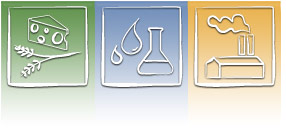|
Cleaning
& storage of EC/TDS/ Resistivity probes
Conductivity probes are simple to clean. Use a Q-tip
with alcohol for dual pin sensors (amperometric) and
a cloth with alcohol for 4 ring type sensors (potentiometric).
Probes can be stored dry in a clean environment.

EC
vs TDS vs TDS442 in agriculture (fertilizers)
This
file is a Adobe Acrobat document. If you already have
Adobe's free Acrobat Reader, simply click on the icon
above. If you do not yet have the reader, just click on
this icon to get a copy.



Understanding
mS, g/l, mg/l, ppm, ppt & converting from one to the
other
Electrical conductivity is the ability of a solution
to conduct an electric current. It can be used as an
index of the total solids (TDS) in a water sample.
The
unit of measure commonly used in Siemens per centimeter
(S/cm). The conductivity of water is usually expressed
as microSiemens/cm (µS/cm) which is 10-6 S/CM. The
relation between conductivity and dissolved solids
is approximately:
2
µS/cm = 1 ppm (which is the same as 1 mg/l)
|
The
conductivity of water from various sources is
Absolute
pure water - 0.055 µS/cm
Distilled water - 0.5 µS/cm
Mountain water - 1.0 µS/cm
Most drinking water sources - 500 to 800 µS/cm
Sea water - 56 mS/cm
Max for potable water - 1055 µS/cm
|
Some
common conductivity conversion factors are
mS/cm
x 1 000 = µS/cm
µS/cm x 0.001 = mS/cm
µS/cm x 1 = µmhos/cm
µS/cm x 0.5 = mg/l of TDS
mS/cm x 0.5 = g/l of TDS
mg/l TDS x 0.001 = g/l of TDS
mg/l TDS x 0.05842 = gpg TDS
|

|

